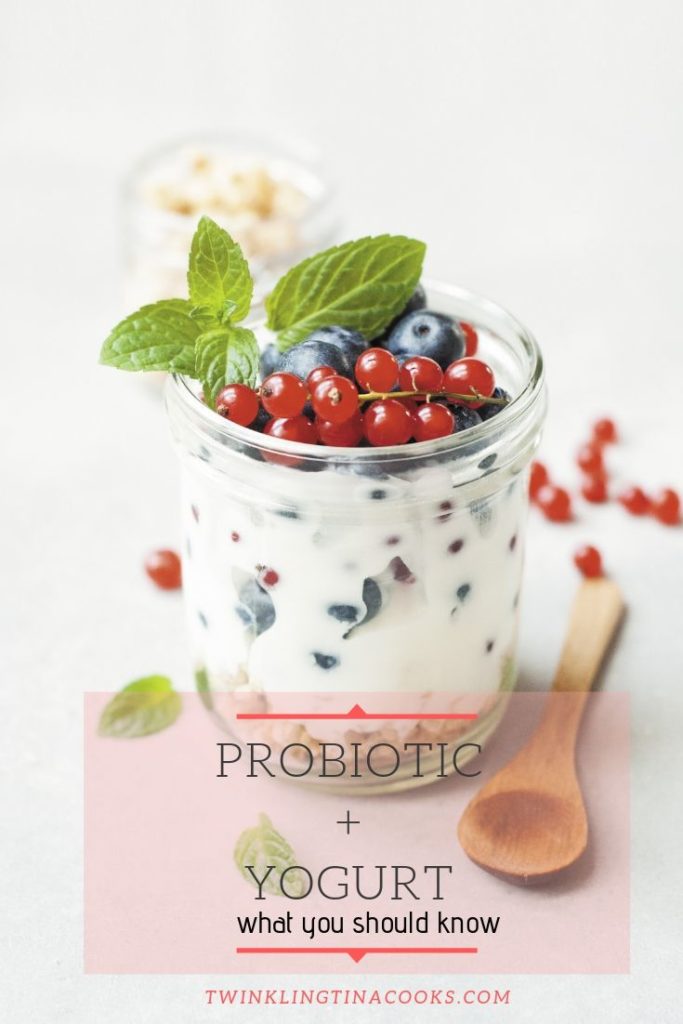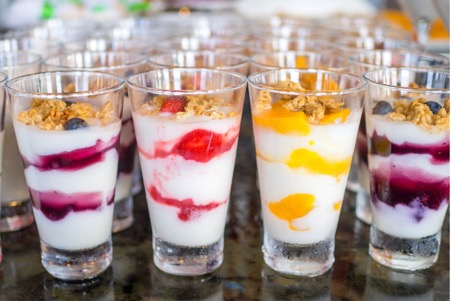We have become so accustomed to seeing probiotic and yogurt in the same sentence that we often neglect to read the ingredients for many of the yogurts we buy – and a surprising number of commercial options do not have any live cultures, and as far as health benefits go are about as useful as drinking sweetened milk.
What are Live Cultures?
The term “probiotic” is often used interchangeably with “live cultures”, although some marketing and advertising gurus will double up by talking about yogurt with live probiotic cultures, what you really want to make sure is that the yogurt you are eating has Lactobacillus acidophilus or Lactobacillus bulgaricus listed as one of the ingredients.
In order to make yoghurt from milk you actually need to use a live bacteria culture, and although it is, of course, possible to make this culture completely at home, for most people who are making their own yoghurt in an non-commercial setting the easiest option is to simply purchase a commercial yogurt starter which contains all the live cultures you need to make your own rich and healthy yoghurt.
You might like:
Strawberry Yogurt Breakfast Bowl
Yogurt parfait
Gluten free Oatmeal and Yogurt Pancake
What Is Lactobacillus Acidophilus or Lactobacillus Bulgaricus
You are probably aware of the number of different types of bacteria that live in the human body, all of which provide essential bodily functions. The Lactobacillus family of bacteria are generally found in the gut, intestines and bowel and help with the proper digestion of food. https://www.ncbi.nlm.nih.gov/pmc/articles/PMC379059/
Live cultures of L. acidophilus and L. d. bulgaricus are the most common bacteria to be added to food for their probiotic effects and ability to help with a range of digestive issues, however they are generally not naturally found in the majority of commercial dairy products. This is why they need to be added during the yogurt making process.
Can I Make My Own Probiotic Yogurt?
Absolutely! As long as your yogurt starter culture contains a certain level of the live bacteria you will end up with a probiotic yogurt.
Commercially made starters and yogurt mixes come in a range of different options, and although the vast majority understand that people who are making their own at home are generally doing so in order to get the freshest with the most health benefits, there are still a range of different live cultures that are included, or not included.
Increasingly you will see the inclusion of a range of other live cultures, including S.Thermophilus and Bifido.Lactis, amongst other cultures included in many yogurt starters.
The amount of live culture included in any yoghurt will depend on a few factors, but the primary one is how heat treated the yogurt was. Generally, milk will need to be heat-treated in order to be sold commercially in most countries, which unfortunately kills the probiotic cultures. This is why these cultures are added afterwards so that they are not affected by the heat-treating process. This is the same whether you are buying a commercial yogurt from your local supermarket, or a yogurt starter from your local health food store.
You will also find that the levels of fat and sugar will vary greatly between different brands, as well as the preservatives used. Although you will generally find fewer preservatives in a powdered culture, there are some that still use coloring and synthetic flavoring additives, so it is always a good idea to read your labels well.
Other Probiotic Live Cultures
Streptococcus thermophilus (S.Thermophilus) has only recently come to the attention of health researchers so the full benefits of this bacteria are still being looked into , but it has been shown to be excellent for healthy skin (applied as a mask), and may increase folate levels, which is a vital mineral for reducing certain birth defects.
Bifidobacterium lactis (Bifido.Lactis) is also a relatively new live culture to gain interest in the food industry. Two of the reasons that have people interested is that it has been reputed to be immune boosting when taken as a part of the regular diet. And it also looks like it may be effective in reducing the chances of an infant likely to be susceptible to skin conditions like eczema because of a family history of such condition, when the live culture is taken when their mothers are pregnant as part of the diet.



14 comments
Probiotics are good for digestion. Didn’t know we can make probiotic yogurt at home also. Thanks.
I studied about Lactobacillus before a decade ago. It’s a nice feeling to read again lactobacillus and probiotic bacteria through your post.
Yumm, Tina this is such a great topic you have mentioned. I am a huge fan of homemade probiotics and is so much healthy for the whole family.
We love having yogurt in all our meals, so I make yogurt at home. I use the culture of a fresh pack of yogurt from the market. This is an informative post and I am certainly going to look for the nutrition facts and details of L. acidophilus / L. bulgaricus on the label from now on. Thanks Tina.
I am happy to know about the probiotic yoghurt .It sounds like a good addition to my diet
Probiotics are necessary and good for digestion. I too have probiotic yogurt.
Probiotics are very important fir our digestive health. I have started incorporating probiotic yogurt in my diet and think it is working great for me.
My son loves yogurt and I like making it at home too. It’s good to know so much nutritional information about probiotic and lactobacillus bacteria.
It was nice learning about probiotics in depth. I havent been consuming much lately. Will follow soon! 🙂
Your post left me an ounce more enriched Tina, earnestly this is in-depth information. Great post!
All I knew tiil date was curd is important for you… Never knew so much in detail.. Just a silly question is yogurt warm for the body or cold?
Thanks for sharing so much information, I have recently learnt a couple of no-fire recipes for kids, with yogurt and they are healthy, easy and tasty too
Probiotic + yogurt sounds an amazing combination for a healthy gut. Didnt know the benefits of this are so many and glad that we can make a probiotic yogurt at home as well.
I am sure going to add this in my diet …thanks for sharing such great details about probiotic yoghurt